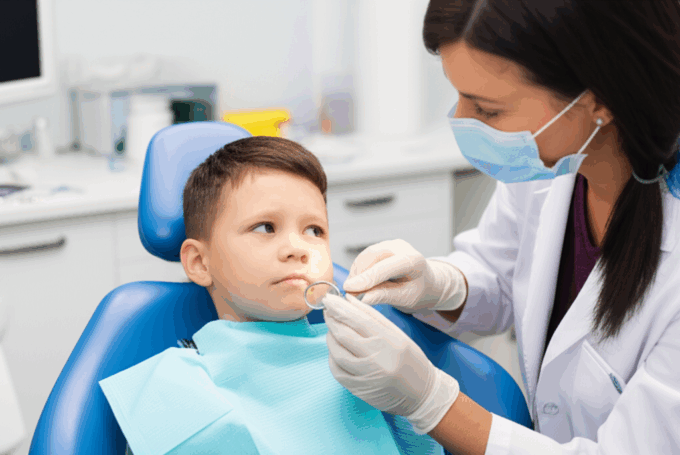Pediatric Dental Emergencies: Best Actions for Parents

Experiencing pediatric dental emergencies can be a stressful and frightening time for both children and their parents. Knowing the best course of action can make a significant difference in managing the situation, minimizing pain, and preserving the health of your child’s teeth. While most dental issues can be addressed during regular check-ups, unexpected accidents happen, and prompt, informed responses are crucial. This guide will equip you with the knowledge to handle common dental emergencies effectively.
Understanding Pediatric Dental Emergencies
Dental emergencies in children can range from minor chip to severe trauma causing a tooth to be knocked out. Common scenarios include:
Chipped or Fractured Tooth: Falls, sports injuries, or biting down on hard objects can lead to chipped or fractured teeth. The severity can vary from a small enamel chip to a more significant break that exposes the inner pulp of the tooth.
Knocked-Out Tooth (Avulsed Tooth): This is often the most alarming type of dental emergency. A direct blow to the mouth can cause a permanent or even a baby tooth to be completely dislodged from its socket.
Toothache: Severe toothaches can stem from cavities, infections, or injuries. While not always an immediate emergency, excruciating pain that disrupts sleep or eating warrants urgent attention.
Lost Filling or Crown: A dislodged filling or crown can leave a tooth sensitive and vulnerable to further damage.
Abscessed Tooth: An infection at the root of a tooth or in the gums can cause swelling, pain, and fever. This is a serious condition that requires immediate medical and dental intervention.
Soft Tissue Injury: Cuts or tears to the lips, tongue, cheeks, or gums can occur during accidents.
Immediate Actions for Common Dental Scenarios
When faced with a pediatric dental emergency, acting quickly and calmly is key. Here’s a breakdown of best actions for various situations:
Managing a Chipped or Fractured Tooth
If your child chips or fractures a tooth, the first step is to rinse their mouth with warm water and check for any bleeding. If there’s bleeding, apply gentle pressure with a clean gauze pad. Try to locate the broken piece of the tooth. If you find it, gently clean it with water (do not scrub) and place it in a container of milk or saliva to keep it moist. This is important because the dentist may be able to reattach the fragment. Schedule an appointment with your dentist as soon as possible, especially if the fracture is large or exposes the inner tooth.
What to Do with a Knocked-Out Tooth
A knocked-out permanent tooth is a time-sensitive emergency. If handled correctly, the tooth can often be successfully reimplanted.
1. Find the Tooth: Locate the tooth immediately.
2. Handle with Care: Pick up the tooth by the crown (the chewing surface), never by the root. Avoid touching or cleaning the root surface.
3. Keep it Moist: The most critical step is to keep the tooth moist. The best storage medium is a special tooth-preserving solution called Hank’s Balanced Salt Solution (HBSS). However, if this isn’t readily available, immerse the tooth in cold milk or the child’s own saliva. Do not wrap it in a tissue or cloth, as this can damage the root.
4. Rinse the Socket: Gently rinse your child’s mouth with saline solution or warm water.
5. Control Bleeding: If the socket is bleeding, have your child bite down gently on a clean gauze pad.
6. Seek Immediate Dental Care: Get to a dentist or emergency room within 30 minutes of the injury. The sooner the tooth is reimplanted, the higher the chance of success.
For a knocked-out baby tooth, the approach is slightly different. While reimplantation of baby teeth is generally not recommended due to potential damage to the developing permanent tooth beneath, you should still see a dentist. The dentist will check for any fragments in the socket and may place a space maintainer to prevent adjacent teeth from shifting into the empty space.
Addressing Severe Toothache
A sudden, severe toothache that is unbearable or accompanied by swelling, fever, or difficulty breathing requires immediate dental attention. Rinse your child’s mouth with warm salt water. You can also apply a cold compress to the outside of the cheek to reduce swelling and discomfort. Avoid giving your child aspirin, as it can increase bleeding risk if there is an open wound in the mouth. Over-the-counter pain relievers like ibuprofen or acetaminophen, given according to age and weight, can provide temporary relief. However, these are stop-gap measures; a dental examination is


